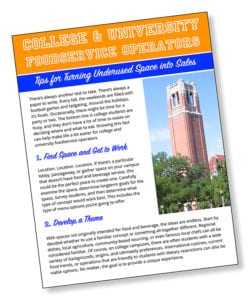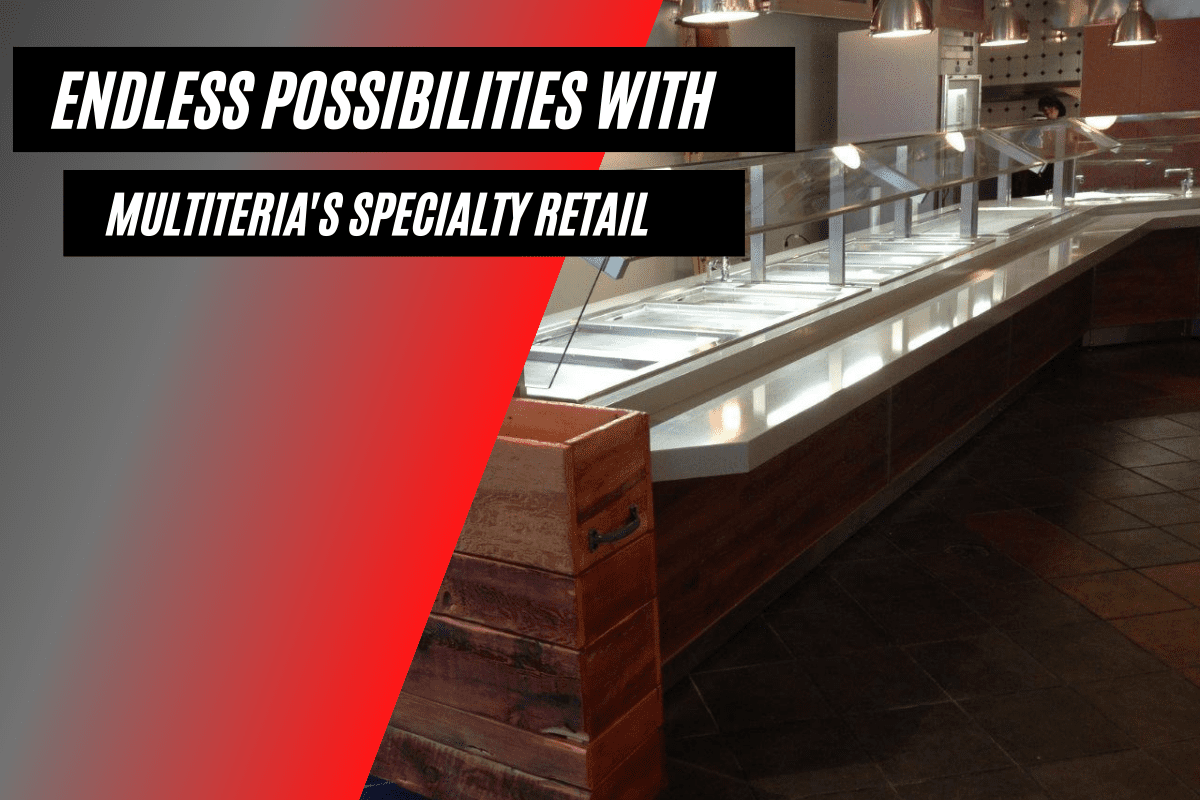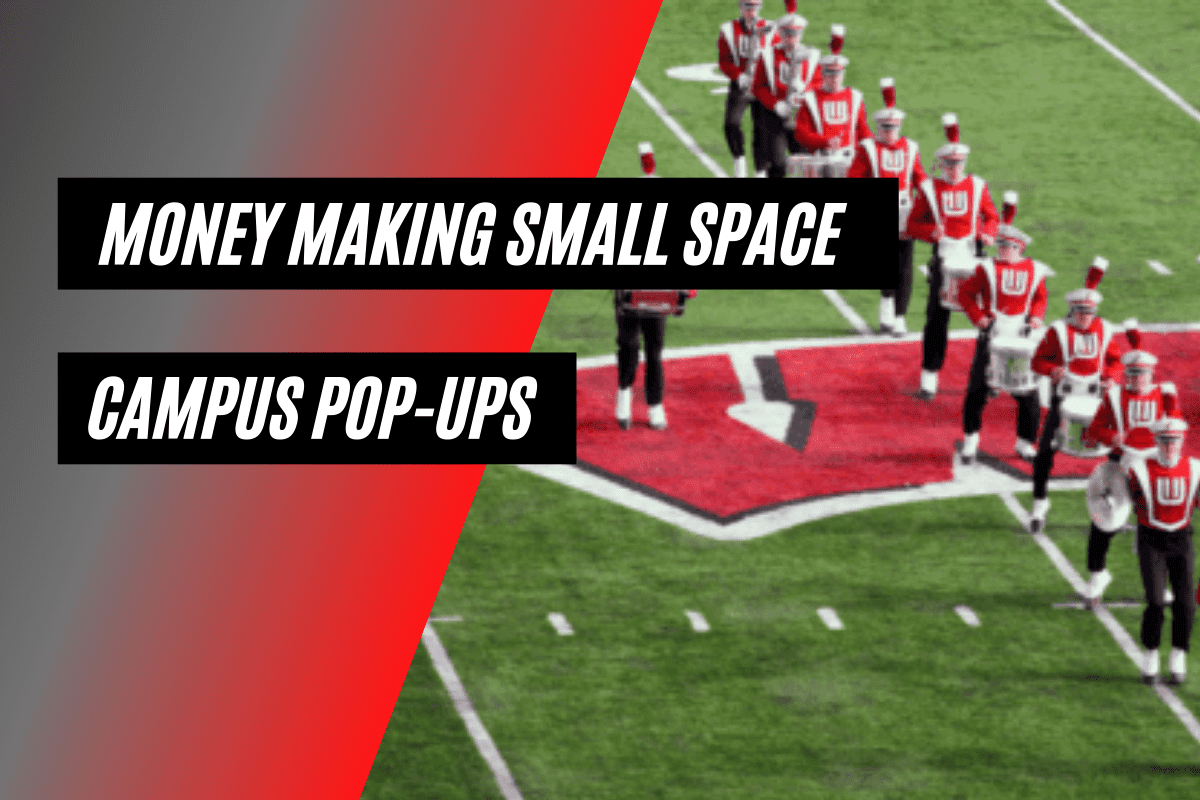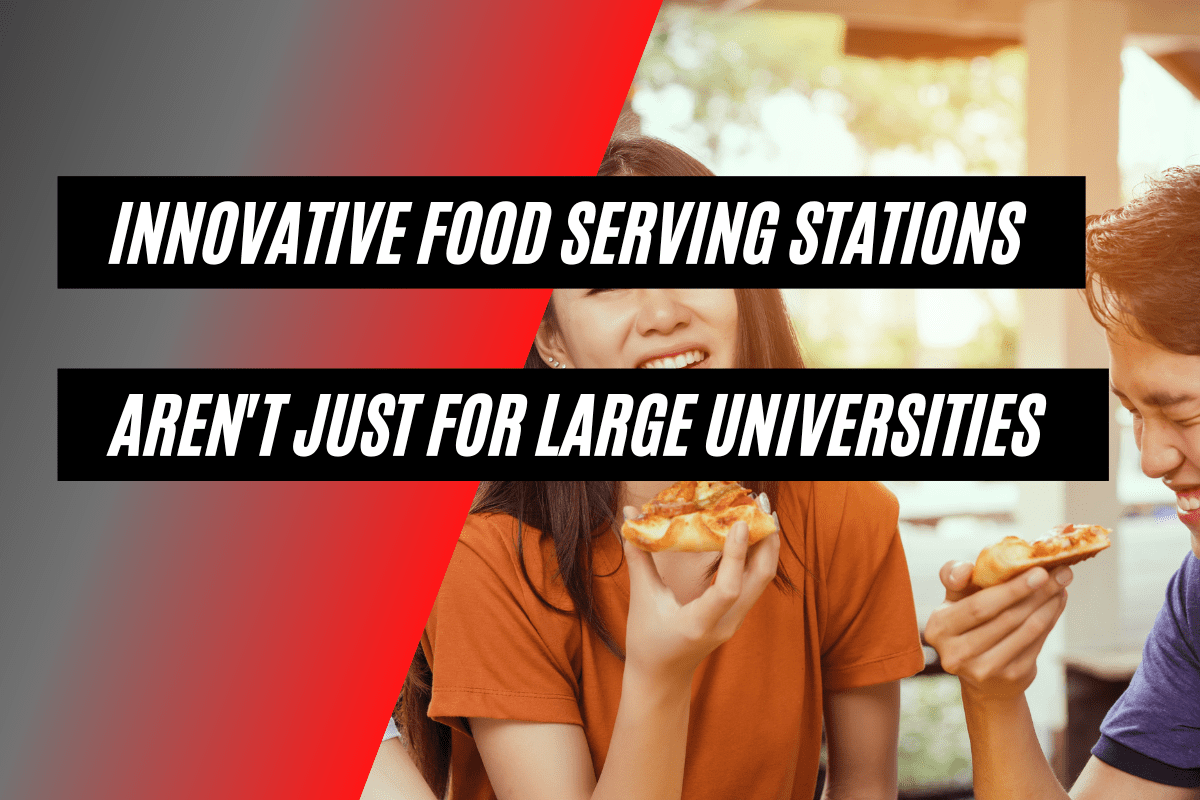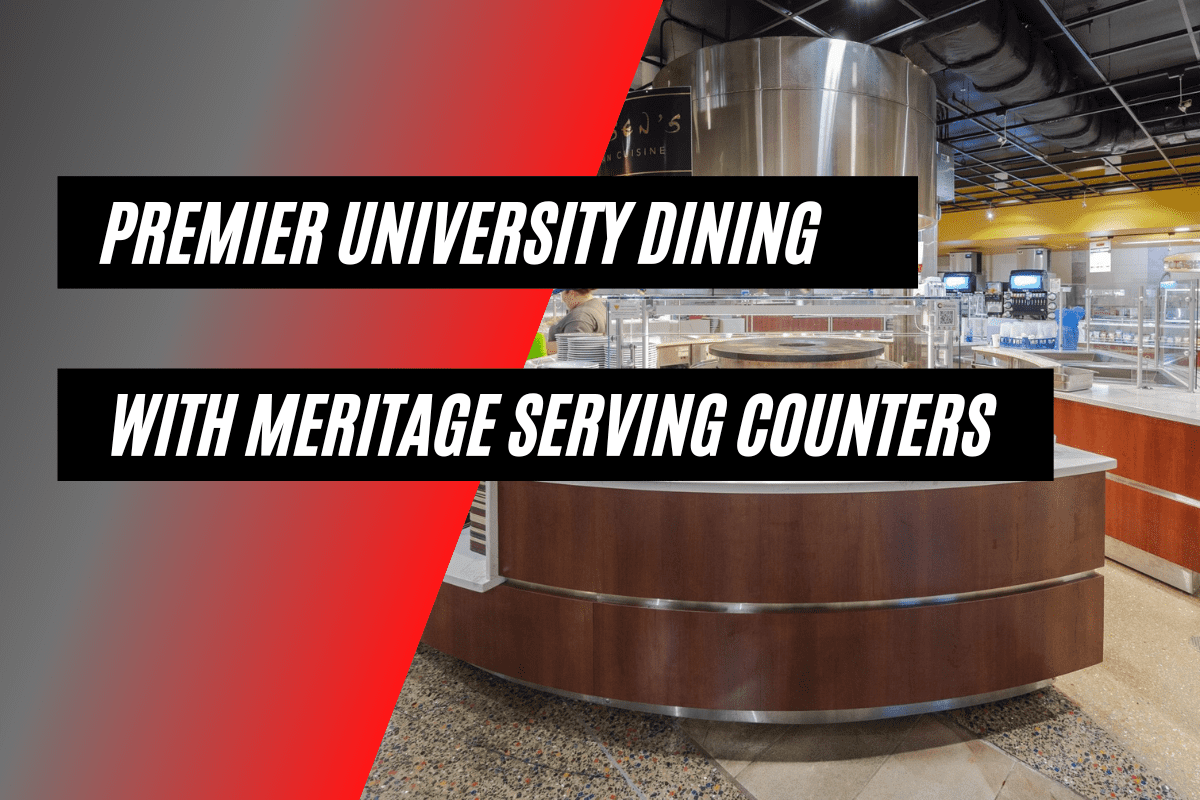For college and university foodservice programs to succeed, they should consider seven important components.
In terms of foodservice, it's critical for college and university directors to consider the actual needs of the students, including where, when, what, and how much time a student might have. Essentially, putting themselves in the shoes of the students they serve.
According to the National Association of College and University Food Services, this translates to seven different components in a campus foodservice operation. Let's briefly go through each of them here:
DINING HALLS
Dining halls are the standard-bearer when it comes to eating in college. Typically, they include several serving counters, are organized in buffet options, and provided a variety of choices to hungry diners. But whether you're serving John Belushi at Faber College or a current student at your local state school, the dining hall is critical as a place for choice and as a gathering spot.
FOOD COURTS
Speaking of choice, a food court is the evolution of the dining hall concept. They are similar because they offer choice and variety, typically in a tray-service type environment. They are different, though, typically in terms of branding and name identity. While a dining hall is often branding singularly as a university foodservice operation, a food court might contain popular fast casual chains or at the very least have food options displayed in a more branded fashion.
MARKETPLACES
Think of a marketplace as the retail option where students can go on campus. Typically, these will include foods to be prepared in the dorm room kitchen, but they don't have to be just prepare-at-home foods. Like grocery stores off-campus, prepared foods have a place in campus marketplaces, as well.
EXPRESS UNITS
Express-type options are typically kiosk, grab-n-go locations that eliminate traditional point-of-sale barriers. Designed for students who are running to catch their next class across campus. They're designed with time in mind.
COFFEE SHOPS AND JUICE BARS
More than any other type of foodservice component on this list, coffee shops and juice bars exist for academic purposes. Essentially, they're like on-campus libraries with a more vibrant atmosphere, and with food and beverage options. Like express units, they're designed with time in mind but for the exact opposite reasons. Aside from the quick cup of joe, students in coffee shops typically have time.
SIT DOWN RESTAURANTS
It's parents weekend. Students want to take their moms and dads out for a nice sit-down restaurant. Why should they have to leave campus? The answer is, they shouldn't. A sit down, full-service restaurant provides students with a nice place to take their parents, where faculty can take visiting guests for lunch, and were students can splurge when they have the tie and money.
CONVENIENCE STORES
Last but not least, we have the on-campus c-store. Typically smaller than a campus marketplace but larger than express units, the convenience store as a quick place -- nearby -- that provides students with all the basics, including limited prepared food options.
Does your college or university foodservice program offer all seven of these components?
Providing such a wide range of service greatly enhances the probability that students will stay on campus and participate in a campus foodservice program. The goal is to provide food options that are convenient in terms of location, menu options, and time.
Because these options are so different in terms of their delivery methods -- from grab-n-go merchandisers to buffet serving lines and pretty much everything in between -- the equipment required to make them successful is also different.
Download Your Copy of Our "C&U Tips Sheet" Below!
Your student body is always busy, always on-the-go. From tests and papers, to attending the "big game," and even participating in sports at all levels, they barely have time to get a decent meal. When it comes to foodservice, you need to catch them in places outside of your normal venues. This is where our set of quick tips can help you out. This brief guide will get you thinking "outside of the box." You'll be able to see hidden, underutilized spaces where you can bring foodservice to new places on your campus. Download it today!

